ourvioletdeath
205 posts
Latest Posts by ourvioletdeath
Why is no one talking about what happened in São Paulo yesterday?
The sky turned completely black around three in the afternoon partly because of smoke coming from the Amazon rainforest, WHICH IS 2300 KILOMETERS AWAY FROM THE CITY, where the government has greatly increased the amount of land being burned for profit. People are getting sick, animals are dying, native territory is being lost to the flames.
This is what the sky looked like in my city yesterday, in the early afternoon.



It got so dark so fast the city had to turn on the lamp posts and night lighting.
Please talk about this. Reblog this post, non-brazilians especially.
STOP SCROLLING!
Please read this if you want to make a sick boy happy. Lorenzo Snippe is a 9-year-old boy from the Netherlands who is very sick. In 2016 he was diagnosed with leukemia and in 2017 with x-ald. On the third (3) of February is his tenth (10) birthday, and it will probably be his last. Because he can’t get any visitors due to being so sick, his parents have asked people in this news article to send him a happy birthday postcard as soon as possible.
If you’re able to, please send him a postcard wishing him a happy birthday and tell him where you’re from! If you can’t, please reblog this post to make sure it will reach as many people as possible! His address is:
Prinses Wilhelminastraat 22
7753 TM Dalerpeel
The Netherlands
He really loves animals, so it would be great if you could send a postcard with an animal on it or something like that!
Don’t send him or his family rude things and don’t use his address for other things than described in this post!
The Devil is known for being incapable of love. You are determined to romance the living hell out of him.
Your MC knows they’re in a story, and makes full use of all the tropes to come out a hero every time. Trouble is, there’s a real hero emerging in the city, which presents the MC with a choice: remain a hero and watch the story crumble around them, or become a villain and save the world

Is an immunization for stress on the horizon?
Can probiotics fend off mood disorders?
It’s too early to say with scientific certainty, but a new study by CU Boulder researchers suggests that one particular beneficial bacteria can have long-lasting anti-inflammatory effects on the brain, making it more resilient to the physical and behavioral effects of stress.
The findings, if replicated in clinical trials could ultimately lead to new probiotic-based immunizations to protect against posttraumatic stress disorder (PTSD) and anxiety or new treatments for depression, the authors say.
“We found that in rodents this particular bacterium, Mycobacterium vaccae, actually shifts the environment in the brain toward an anti-inflammatory state,” said lead author Matthew Frank, a senior research associate in the Department of Psychology and Neuroscience. “If you could do that in people, it could have broad implications for a number of neuroinflammatory diseases.”
Anxiety, PTSD and other stress-related mental disorders impact as many as one in four people in their lifetime. Mounting research suggests that stress-induced brain inflammation can boost risk of such disorders, in part by impacting mood-influencing neurotransmitters like norepinephrine or dopamine.
“There is a robust literature that shows if you induce an inflammatory immune response in people, they quickly show signs of depression and anxiety,” said Frank. “Just think about how you feel when you get the flu.”
Research also suggests that trauma, illness or surgery can sensitize certain regions of the brain, setting up a hair-trigger inflammatory response to subsequent stressors which can lead to mood disorders and cognitive decline.
“We found that Mycobacterium vaccae blocked those sensitizing effects of stress too, creating a lasting stress-resilient phenotype in the brain,” Frank said.
A previous CU Boulder study, found that mice injected with a heat-killed preparation of M. vaccae and then placed with a larger aggressive male for 19 days exhibited less anxiety-like behavior and were less likely to suffer colitis or inflammation in their peripheral tissues. For the new study, published in the journal Brain, Behavior and Immunity, the researchers set out to determine what exactly M. vaccae does in the brain.
Male rats injected with the bacterium three times, one week apart, had significantly higher levels of the anti-inflammatory protein interleukin-4 in the hippocampus — a brain region responsible for modulating cognitive function, anxiety and fear — eight days after the final injection.
After exposure to a stressor, the immunized animals also showed lower levels of a stress-induced protein, or alarmin, called HMGB1, believed to play a role in sensitizing the brain to inflammation, and higher expression of CD200R1, a receptor key for keeping glial cells (the brain’s immune cells) in an anti-inflammatory state. As in the first study, the immunized rats exhibited less anxious behavior after being stressed.
Mood-modulating microbes
“If you look at the field of probiotics generally, they have been shown to have strong effects in the domains of cognitive function, anxiety and fear,” said senior author Christopher Lowry, an associate professor in integrative physiology. “This paper helps make sense of that by suggesting that these beneficial microbes, or signals derived from these microbes, somehow make their way to the hippocampus, inducing an anti-inflammatory state.”
M. vaccae was first discovered on the shores of Lake Kyoga in Uganda in the 1990s by immunologists who realized that people who lived in the area responded better to certain tuberculosis vaccines. They later realized that the bacterium found in the lakeshore soil had immune-modulating properties that were enhancing the vaccine’s efficacy. Researchers set out to study it in lung cancer patients and found that, while it did not prolong life, it somehow improved mood.
M. vaccae is not commercially available but is the subject of numerous ongoing studies.
Lowry, who has been studying it for 17 years, envisions a day when it or another beneficial bacteria could be administered to people at high risk of PTSD – such as soldiers preparing to be deployed or emergency room workers – to buffer the effects of stress on the brain and body. It could also possibly be used to prevent sepsis-induced cognitive impairment, he said.
Meanwhile, he is working with researchers at University of Colorado Denver on a study exploring whether veterans with PTSD can benefit from an oral probiotic consisting of a different bacterial strain, Lactobacillus reuteri.
“More research is necessary, but it’s possible that other strains of beneficial bacteria or probiotics may have a similar effect on the brain,” he said.
Human Drug Addiction Behaviors Closely Tied to Specific Impairments Within Six Large-Scale Brain Networks
Specific impairments within six large-scale brain networks during drug cue exposure, decision-making, inhibitory control, and social-emotional processing are associated with drug addiction behaviors, according to a systematic review of more than 100 published neuroimaging studies by experts at the Icahn School of Medicine at Mount Sinai and published Wednesday, June 6 in the journal Neuron.
Drug addiction is a disorder that encompasses not only excessive drug-seeking and taking, but also fundamental changes in cognition and emotional processing. It comprises core clinical symptoms and behavioral manifestations including a chronically relapsing cycle of intoxication, bingeing, withdrawal, and craving that propels uncontrollable drug use despite adverse consequences and a reduction in the pleasure derived from the drug. While much of the early research on drug addiction focused on understanding the rewarding properties of the drug, recent research has made it increasingly clear that cognitive and emotional impairments support the initiation, escalation, and maintenance of the cycle of addiction. A better understanding of the underlying impaired neural mechanisms in human drug addiction is critical to paving the way for the development of more targeted, evidence-based treatment interventions and timely prevention approaches.
The Impaired Response Inhibition and Salience Attribution (iRISA) model, first published in 2002 by Rita Goldstein, PhD, Professor of Psychiatry and Neuroscience and Director of the Neuropsychoimaging of Addiction and Related Conditions research program at the Icahn School of Medicine at Mount Sinai, and Nora Volkow, Director of NIDA, proposed that impairments of two broad neuropsychological functions—response inhibition (a cognitive process that permits individuals to inhibit their impulses) and salience attribution (the property of tagging something as valuable or important)—and their underlying neural substrates contribute to the cycle of addiction across a broad range of substances of abuse. The iRISA model uses multiple neuroimaging modalities including magnetic resonance imaging, electroencephalogram (EEG) and derived event-related potentials, positron emission tomography, and neuropsychological testing to explore the underlying neurobiology of human drug addiction and the shift to excessive salience attributed to the drug and drug-related cues at the expense of other salient reinforcers as associated with impaired self-control (especially in a drug related context) and increased drug taking in drug addicted individuals.
“We conducted the current review to update the iRISA model with the most recent evidence from the neuroimaging literature by systematically reviewing 105 task-related neuroimaging studies published since 2010,” says Dr. Goldstein, last and senior author of the paper. “We found consistent impairments in brain function in six large-scale brain networks during performance of different tasks. While the involvement of these specific brain networks was task-specific, we generally observed that in a drug-related context (e.g., during exposure to drug cues) drug addicted individuals had increased engagement of the brain networks underlying decision making, inhibitory control, and social-emotional processing, but a blunted response during non-drug related tasks, as predicted by the iRISA model.”
Specifically, the Mount Sinai study team assessed brain function in drug addiction across a number of brain networks, including findings from whole-brain analyses of significant group differences. They organized the results across six large-scale brain networks that showed impairment of brain function in addiction, encompassing the “reward network,” which includes subcortical and cortical brain regions activated during the appraisal of subjective value; the striatal “habit network,” which underlies learning of automated behavior; the “salience network,” regions involved in (re)directing attentional resources toward salient stimuli; and the “executive network,” which supports the selection of possible behavioral responses (often also named the inhibitory control network).
Two additional networks, which were not discussed in prior reviews of the iRISA model, were found to be relevant to brain function in drug addiction: the “self-directed network,” which is activated during self-directed/referential cognitive processes, and the “memory network,” involved in flexible, multi-cue learning and memory.
“Our review is the first systematic approach to integrate what we know about the function of each of these networks into a comprehensive model underlying drug addiction symptomatology across the addiction cycle,” says Anna Zilverstand, PhD, Assistant Professor of Psychiatry at the Icahn School of Medicine at Mount Sinai and first author of the paper. “We demonstrated common deficits underlying drug addiction independent of the primary drug of choice, which are associated with measures of daily, real-life, drug use and which predict onset, escalation, and relapse into drug use. Our work could inform the development of treatments specifically targeted to alleviate these brain-behavioral deficits.”
Just thought you should know I was browsing Archive Of Our Own and came across an actual fanfic about PIE. The fandom was listed as "languages (anthropomorphic)" and it had pairings such as "Mycenaean Greek/Minoan", "Gothic/Gaulic Latin" and "Pregermanic/Maglemosian". I just about died.

oh my god???!?
Listen my dudes Ancient Egypt existed for a really fuckass long time. Literally just Pharaonic civilization lasted 3,000 years. That’s not even including predynastic civilization and Roman rule. If you lump that in you’re looking at more like… 5,000 years. Like. If you want a comparison of how long that is: THE YEAR IS CURRENTLY 2018. TWO THOUSAND. TWO-THIRDS OF ANCIENT EGYPTIAN PHARAONIC CIVILIZATION HAVE HAPPENED SINCE THE ‘BIRTH OF JESUS CHRIST’ We comparatively just entered the Third Intermediate Period. The Greeks will not take over for another 700~ years. Cleopatra will not be born until the year 2931.
It’s a really long time guys.
The Hand is here! Where is Voigt’s dinner? GUMBY IS HERE ALSO
You punch in a date, and activate the time machine. There’s a flash of light, and you black out.
You awaken in what looks like a hi-tech hospital, with people walking around, conversing in a language you’ve never heard before. One person walks over to you, and says, in fluent English; “Well, you’ve managed to not only travel several thousand years into the past, but you’ve also managed to get into a timeline that honestly shouldn’t exist anymore. So, how do you feel?”
*chemicals*
Wayfaring: do you want to go ahead and get your flu shot today?
Patient: no, I don’t get them. I’m not against vaccines, just the flu shot.
Wayfaring: why is that?
Patient: I’m just not comfortable with all the bad stuff they put in it.
Wayfaring: ok well let’s talk about it. What substances in particular worry you?
Patient: oh uhhh… you know… the bad ones.
Wayfaring:


It typically takes coral 25 to 75 years to reach sexual maturity. With a new coral fragmentation method, it takes just 3.
If you have the time please read this it its entirety. It's so absolutely important to know the true value and necessity of vaccines. If you haven't gotten your immunizations, I implore to you get them, if not for yourself for the people around around and your loved ones.

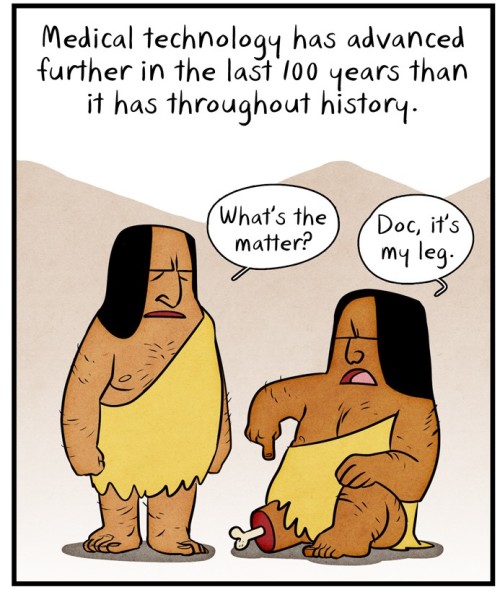
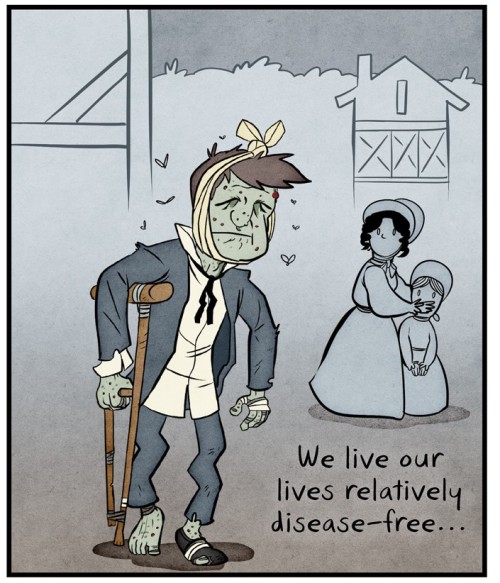

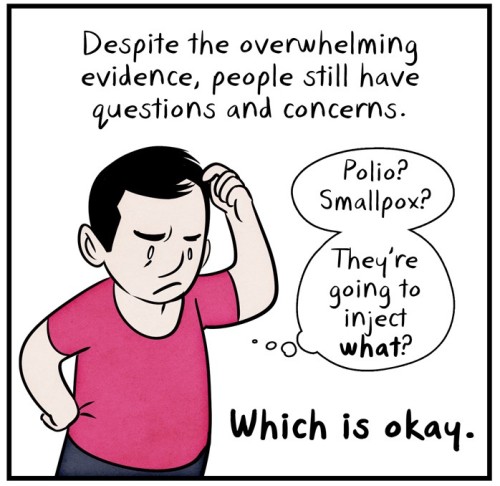

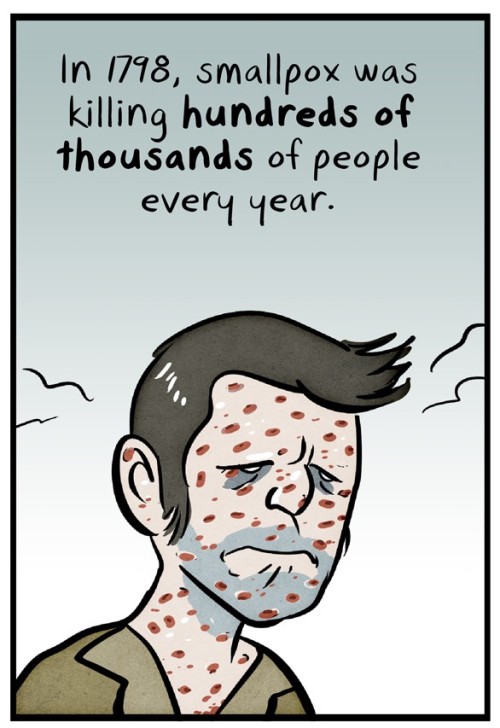

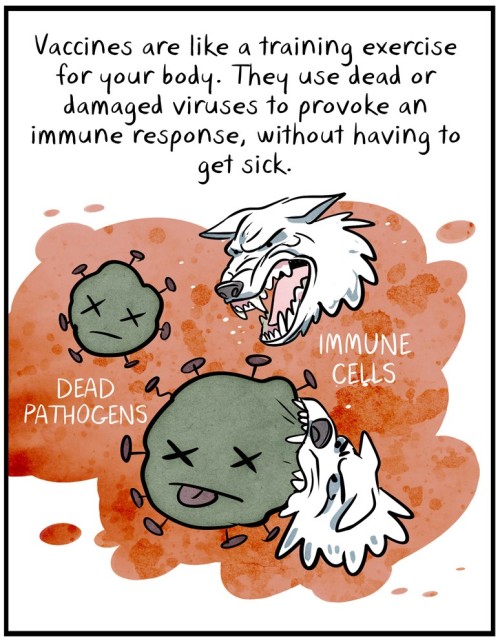


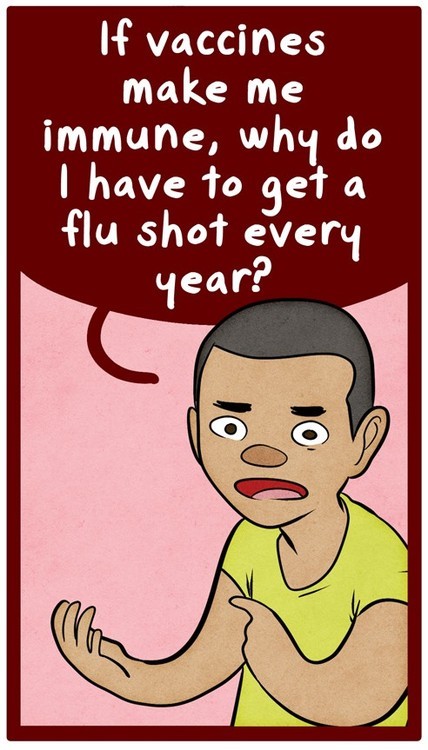
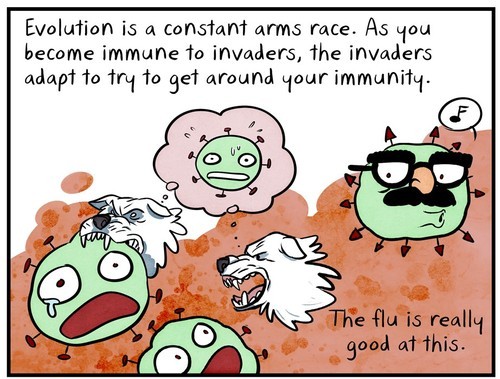
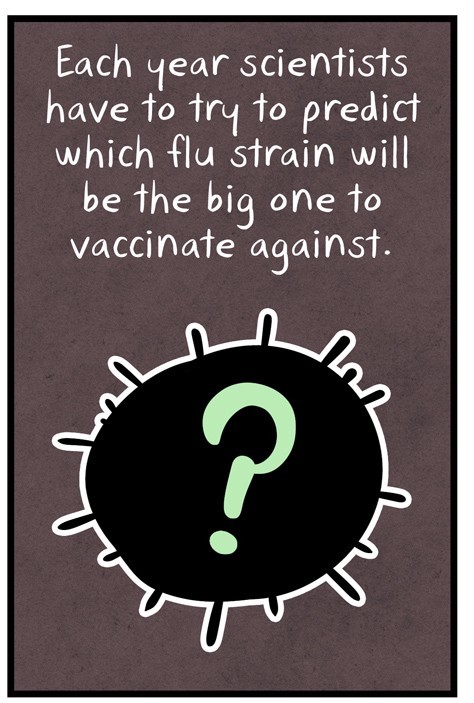
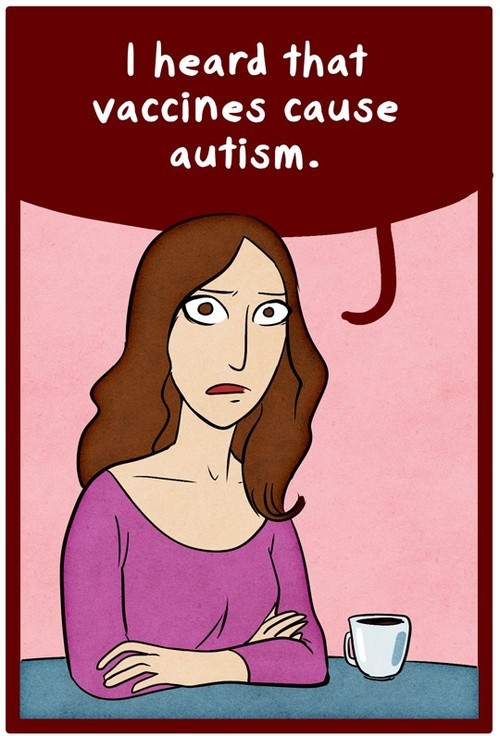

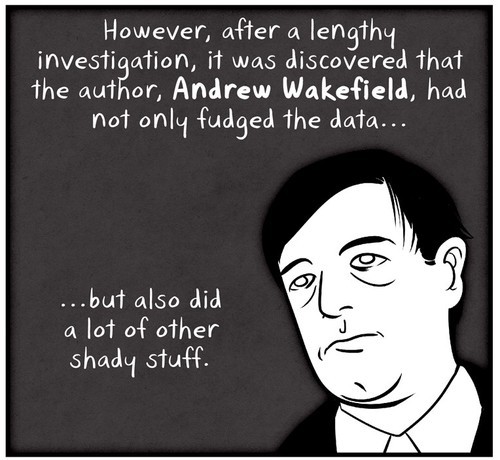



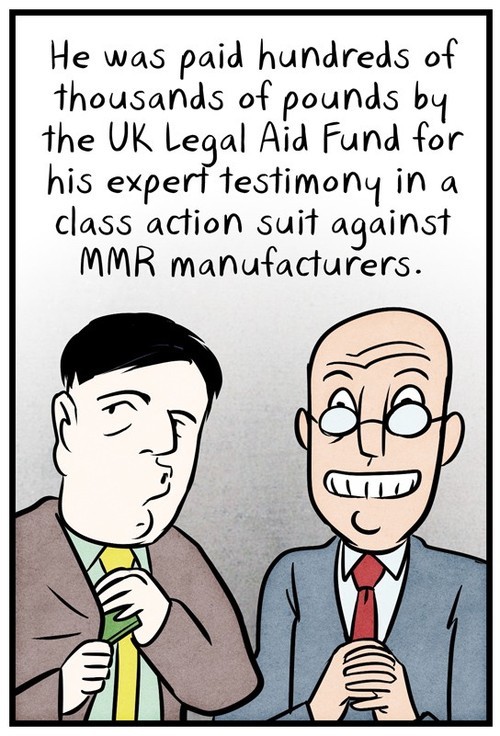


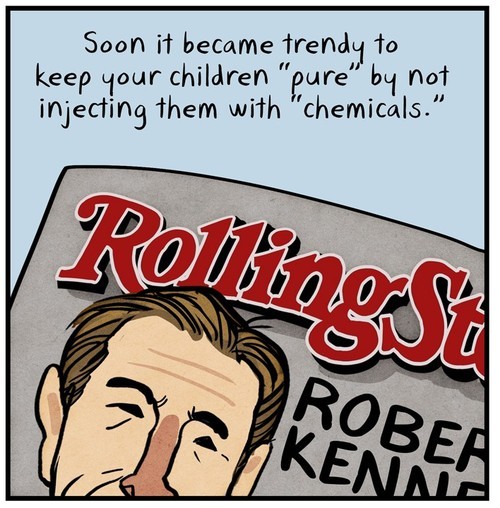




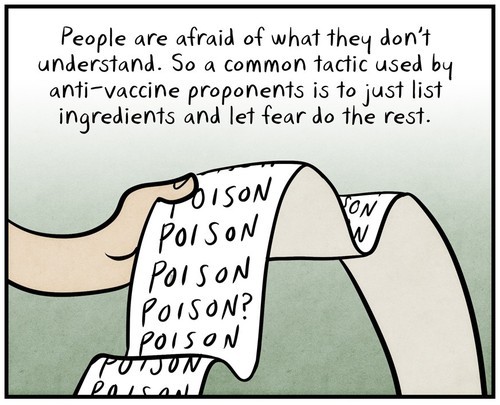
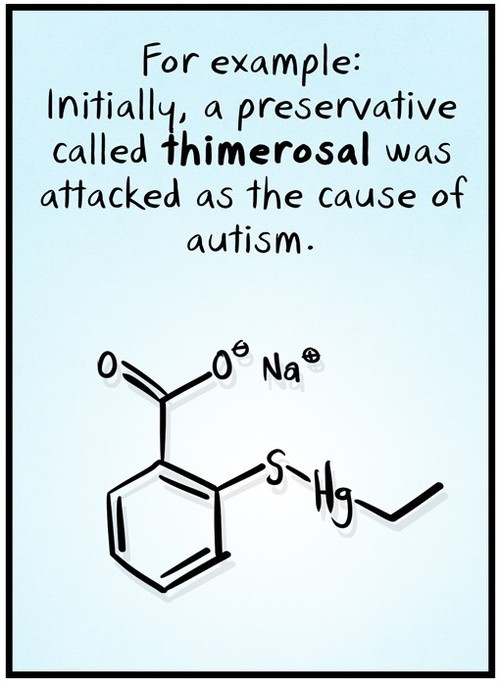
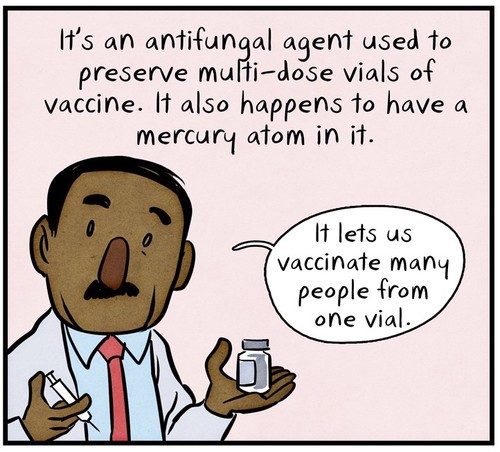
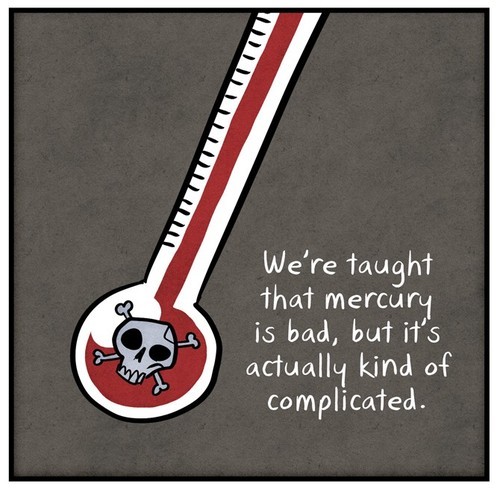
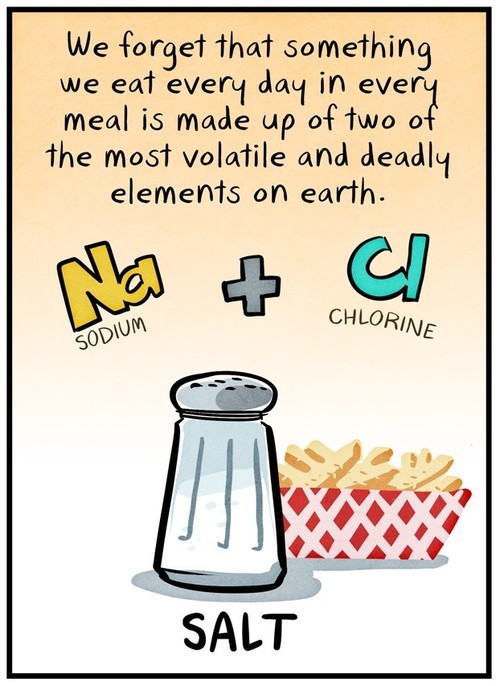

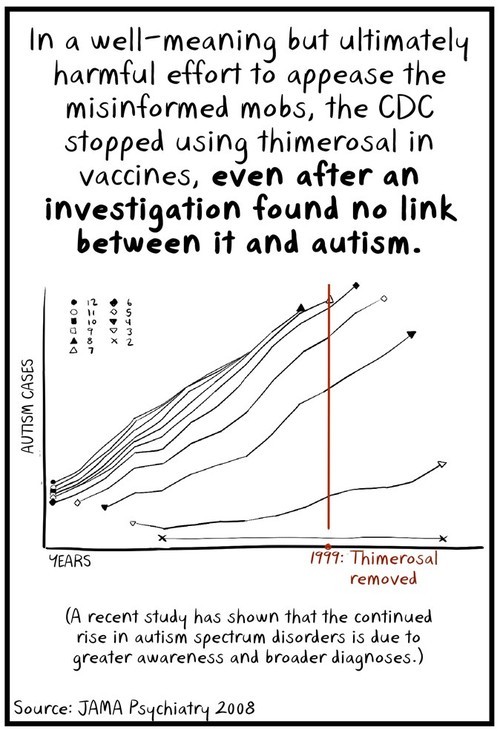


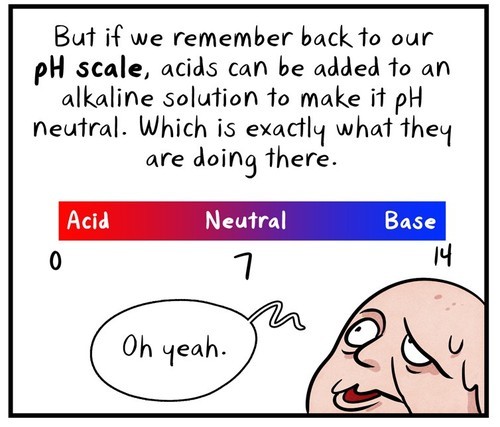


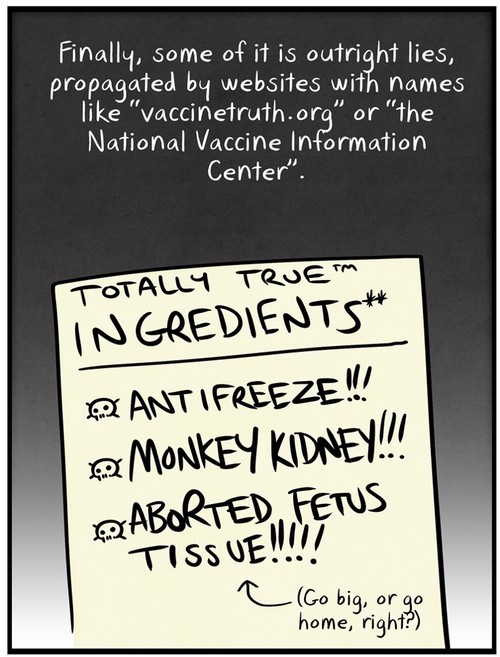
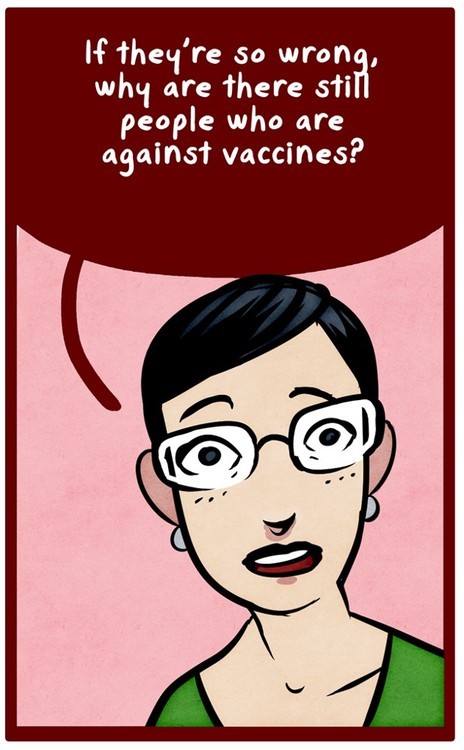

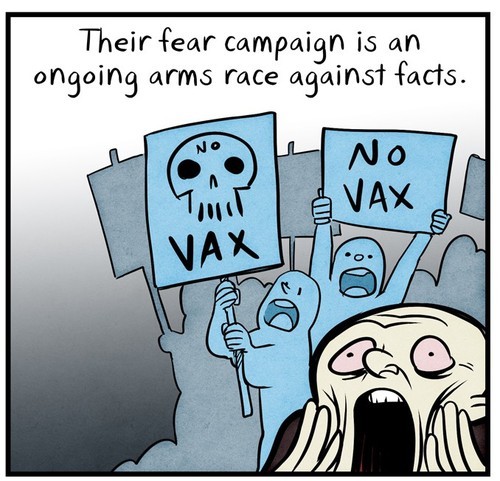


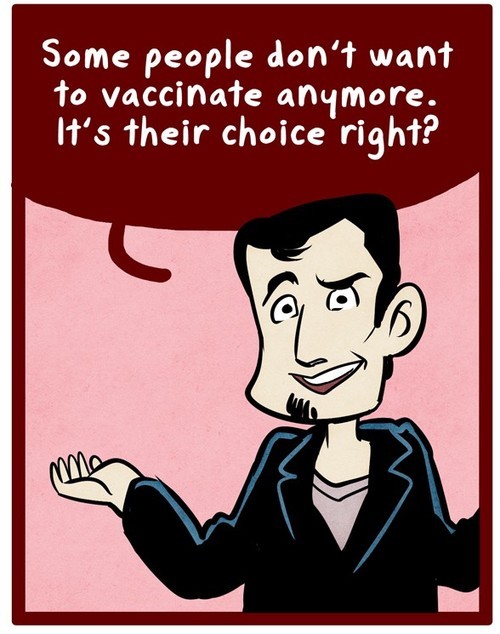
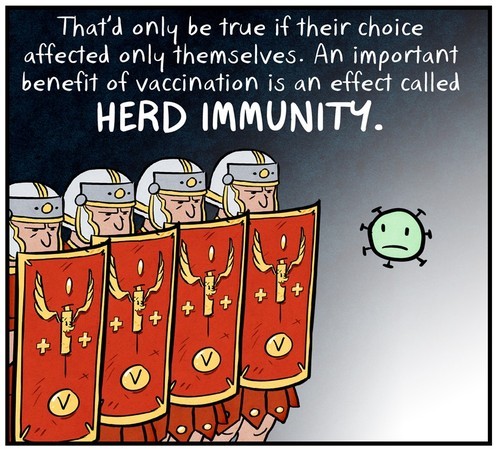


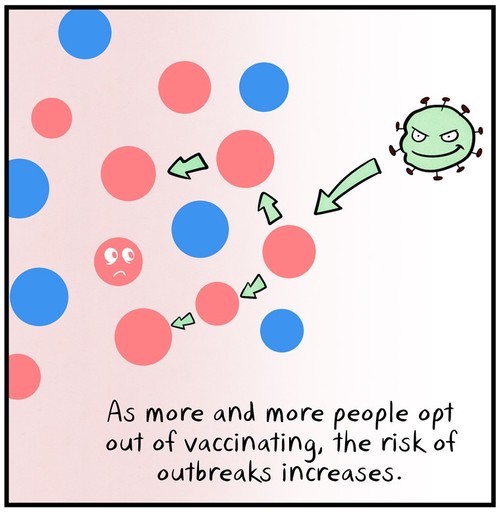


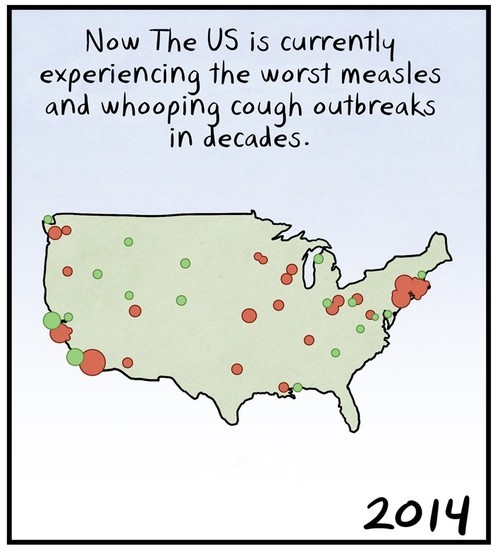
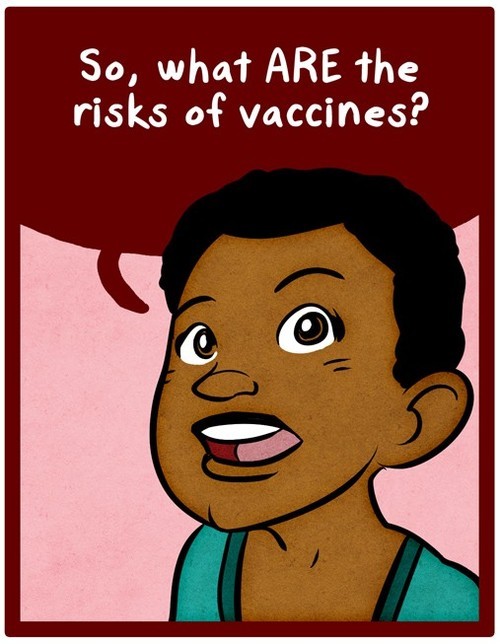

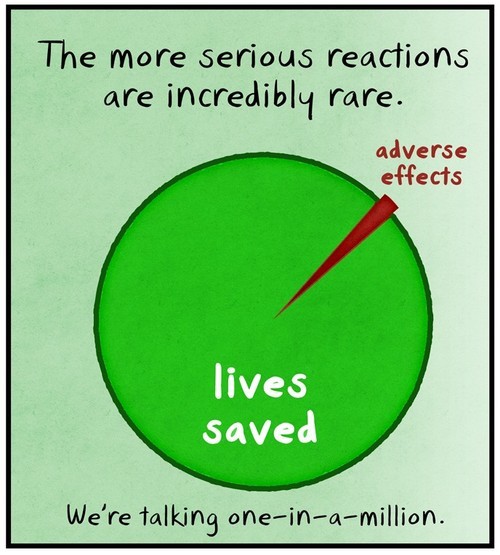

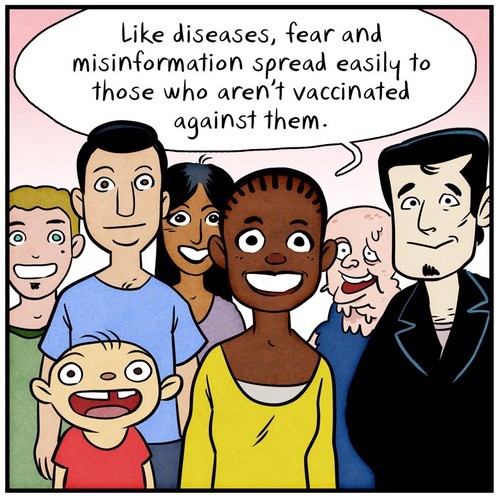

Maki Naro @ The Nib





The bassoon causing new brain disorder
Mutations have been found in the bassoon (BSN) gene, which is involved with the central nervous system, in patients with symptoms similar to, but different from, a rare brain disorder called progressive supranuclear palsy (PSP).
PSP, a form of Parkinson’s disease, is often difficult to diagnose because it can affect people in different ways. Serious problems often include difficulty with walking and balance in addition to a decline in cognitive abilities such as frontal lobe dysfunction.
A team of Japanese researchers investigated patients whose symptoms resembled not only PSP but also Alzheimer’s disease. Despite similarities in the symptoms, detailed pathological analyses showed no resemblance to either disease, which prompted the team to further research the new disease’s underlying mechanism.
They first analyzed the genomes of a Japanese family with several members displaying PSP-like symptoms. They identified a mutation in the BSN gene only in family members with symptoms. These individuals did not have mutations in the 52 other genes associated with PSP and other neurological disorders such as Alzheimer’s and Parkinson’s. This was the first time BSN gene is associated with a neurological disorder.

(Image caption: MRI analysis of a patient with PSP-like symptoms showed severe atrophy of the bilateral hippocampus, mesencephalic tegmentum, cerebellum, and brainstem. Credit: Yabe I. et al., Scientific Reports, January 16, 2018)
The researchers also detected three other mutations in the BSN gene in four out of 41 other patients displaying sporadic, or non-familial, PSP-like symptoms. None of the BSN mutations were detected in a random sample of 100 healthy individuals, underscoring the strong involvement of BSN mutations in the disease.
An autopsy done on one of the family members with the BSN mutation showed an accumulation of a protein called tau in the brain, which is not seen in a normal brain. The researchers believe that the BSN mutation is involved in the tau accumulation, which could cause the development of PSP-like symptoms. An experiment introducing a mutated rat BSN gene to cultured cells also suggested that the mutation causes the accumulation of tau. Communication between nerve fibres could also be affected, as BSN protein play a role in it.

(Image caption: Tau proteins accumulated in the brain of a patient with PSP-like symptoms. Credit: Yabe I. et al., Scientific Reports, January 16, 2018)
“This is a peculiar neurodegenerative disorder which involves mutations in the BSN gene and tau accumulation, but differs from any known disease, including dementia, Parkinson’s, and even PSP,” says Associate Professor Ichiro Yabe of Hokkaido University who led the study. “Patients with PSP-like symptoms and other neurodegenerative disorders should be analyzed for BSN mutations to fine-tune their diagnoses.”
biologists: no macroorganism can survive the endless vacuum of space unprotected for an extended period of time
lichens:


lil matt damon SNAPPED




when i was very small i assumed this song was about some lady who literally kept a human face in a jar by the door and since father mckenzie buried her that meant that he also killed her and basically i thought eleanor rigby was about zombies until i was like 12 years old
Human beings are able to use magic but only through a physical medium, such as a specific type of stone or plant and in some cases even animals. Usable mediums vary from person to person, and most people discover theirs by the time they’re teenagers. You’re now legally an adult but still haven’t found your medium. You’re beginning to think that you can’t use magic at all until a terrible encounter leads you to the horrifying revelation that your medium is human flesh.


I can relate to this on a spiritual level.
as you get older, you realize that you’re not always right and there’s so many things you could’ve handled better, so many situations where you could’ve been kinder and all you can really do is forgive yourself and let your mistakes make you a better person.
Yo this would be so lit
people who actually got to party to the songs that came out in 2009-2010 are so lucky too bad i was eleven
The world is like a video game. Each thing you do affects your stats. Punch something? Your strength increases. Get hit? Your defence increases. Run? You get faster. As long as you do something, you can get better at it. Write about the person who devoted his life to raising his blinking stat.
God, this was such a beautiful movie






Castle in the Sky
Dear Neil, I think I've made a mistake. The thing is: I sent my manuscript to a small publishing house, that I really like (who have published my short story already). It was fine, they gave me feedback and said after that has been applied, they might like to publish my novel (no confirmation yet!). But it's my first novel ever. I've written/edited like 5-6 years. Maybe I should've let go long ago. The first novel isn't supposed to be published, right? It might have been a bad idea... Thoughts?
Either they will want to publish it, or they won’t. If they do, you didn’t make a mistake. If they don’t, then they’ll tell you, and you’ll be wiser than you were before, and that won’t have been a mistake either.



New path into bipolar disorder comes to light
Bipolar disorder (BD) is a multifactorial brain disorder in which patients experience radical shifts in mood and undergo periods of depression followed by periods of mania. It has been known for some time that both environmental and genetic factors play important roles in the disease. For instance, exposure to high levels of stress for long periods, especially during childhood, is one factor associated with development of BD.
New research published in Frontiers in Behavioral Neuroscience connects the dots between two genes involved in the brain’s response to environmental stimuli — called EGR3 and BDNF — and may explain the impaired resilience of BD patients to respond to events, including stress. The study not only provides new insights into the biology of BD, but also suggests that EGR3 could be a potential drug target.
Immediate early genes (IEGs) are a class of genes that respond very rapidly to environmental stimuli, including stress. IEGs respond to a stressor by activating other genes that lead to neuronal plasticity — that is, a change in form and function o brain cells in response to changes in the environment. Ultimately, the process of neuronal plasticity gives the brain the ability to learn from and adapt to new experiences.
One type of protein induced by IEGs is the so-called Early Growth Response (EGR) proteins, which translate environmental influence into long-term changes in the brain. These proteins are found throughout the brain and are highly produced in response to environmental changes such as stressful stimuli and sleep deprivation. Without the action played out by these proteins, brain cells and the brain itself cannot appropriately respond to the many stimuli that are constantly received from the environment.
Effective neuronal plasticity also depends on regulatory factors called neurotrophins that promote development and survival of brain cells. Brain-derived neurotrophic factor (BDNF), the neurotrophin mostly found in the brain, has been extensively investigated in BD patients and has been suggested as a hallmark of BD. Indeed, some studies have shown that serum levels of BDNF are reduced in BD patients during periods of depression, hypomania, or mania. Other studies have shown that regardless of mood state, BD patients present reduced levels of BDNF. Overall, changes in BDNF levels seem to be a characteristic found in BD patients that may contribute to the pathophysiology of the disease.
The new study by an international team of researchers from Universidade Federal do Rio Grande do Sul in Brazil, University of Arizona College of Medicine in the United States and McMaster University in Canada connects the dots between these two players to explain the impaired cellular resilience observed in BD that in the grand scheme of things may relate to the impaired resilience presented by BD patients to respond to events, including stress.
In a previous study by the group in 2016, one type of IEG gene known as EGR3, that normally responds to environmental events and stressful stimuli, was found to be repressed in the brain of BD patients. This suggests that when facing a stressor, the EGR3 in BD patients does not respond to the stimulus appropriately. Indeed, BD patients are highly prone to stress and have more difficulties dealing with stress or adapting to it if compared to healthy individuals. The research group is now suggesting that both EGR3 and BDNF may each play a critical role in the impaired cellular resilience seen in BD, and that each of these two genes may affect each other’s expression in the cell.
“We believe that the reduced level of BDNF that has been extensively observed in BD patients is caused by the fact that EGR3 is repressed in the brain of BD patients. The two molecules are interconnected in a regulatory pathway that is disrupted in BD patients,” says Fabio Klamt, leading author of the article.
The authors also add that the fact that EGR3 responds very quickly to environmental stimuli renders the molecule a potential drug target. “It is possible to imagine that EGR3 may be modulated in order to increase its expression and that of BDNF, which may have a positive impact on BD patients,” says Bianca Pfaffenseller, a scientist working at Hospital de Clínicas de Porto Alegre, in Brazil, and the first author of the study.
The idea that mental disorders should be seen as any other chronic disease in which the underlying biology plays an important role has replaced the old descriptions of mental illnesses as the result of bad psychological influences. As Nobel prize laureate Eric Kandel has said, “all mental processes are brain processes and therefore all disorders of mental functioning are biological diseases.” The perspective article authored by Fabio Klamt and colleagues supports this view by offering new insights into the underlying biology of this lifelong and devastating mental disorder affecting millions of people worldwide.
😍😍😍😍😍😍



